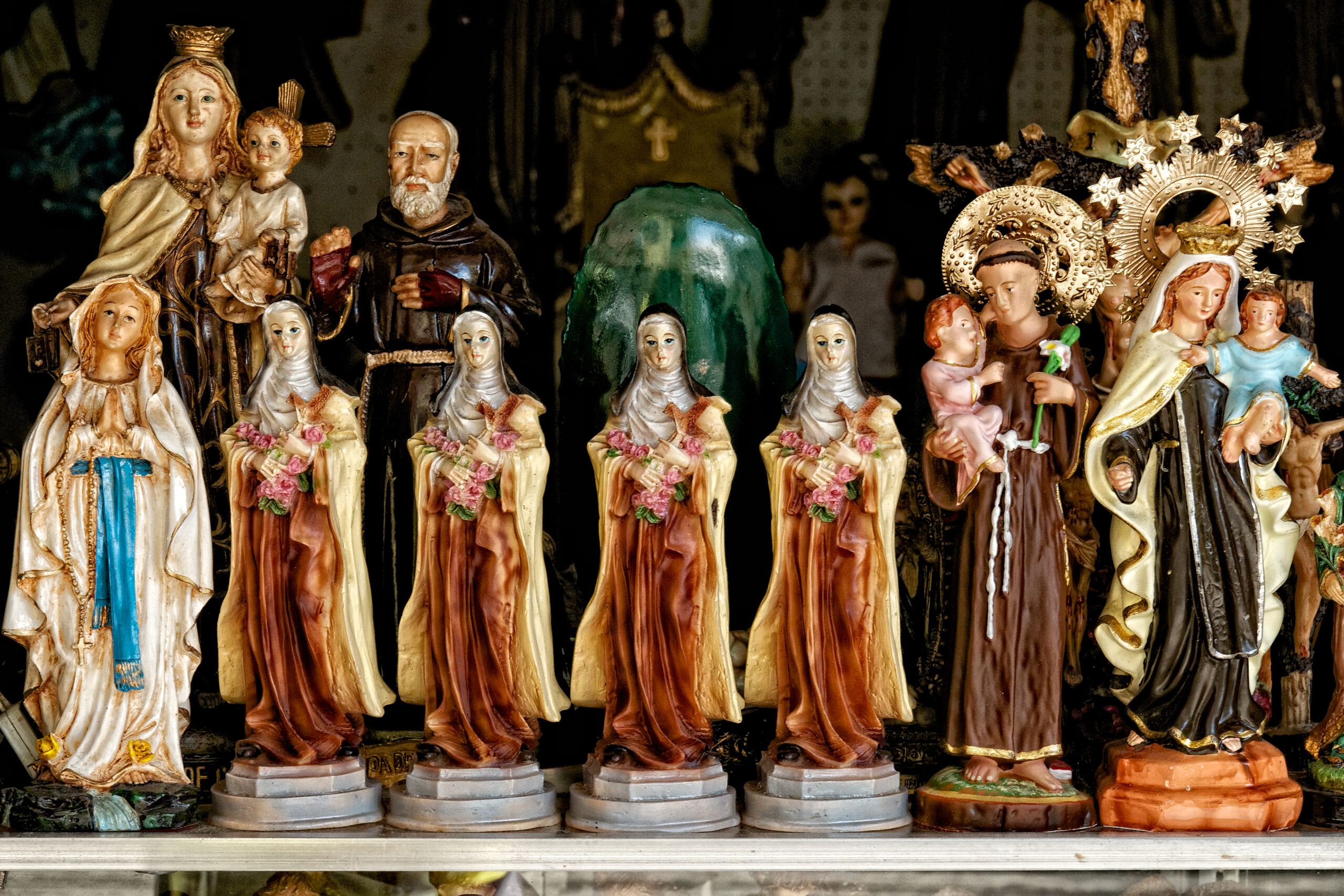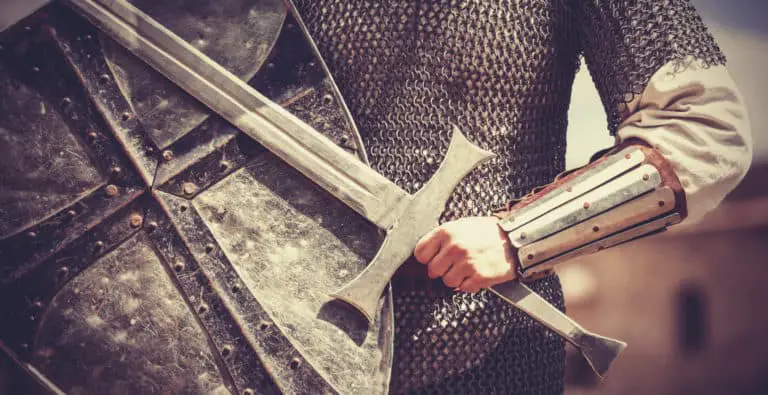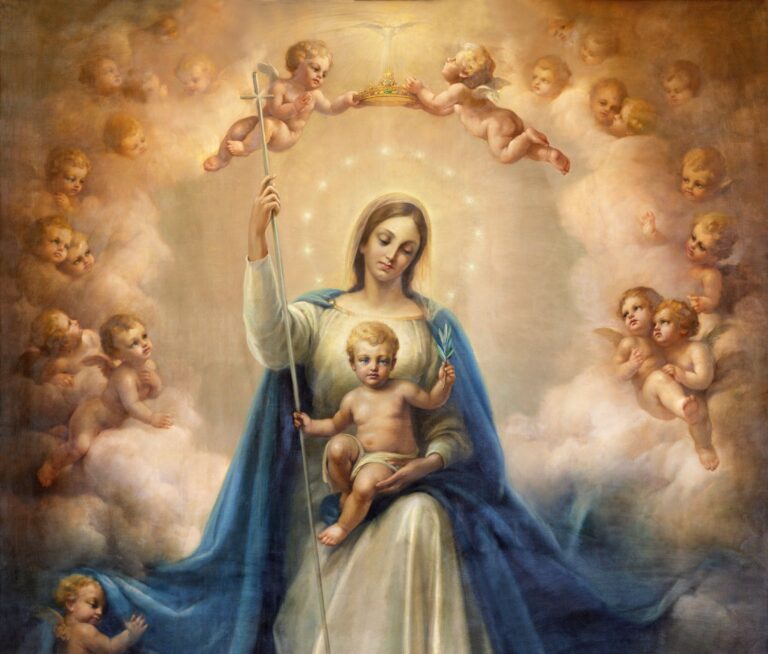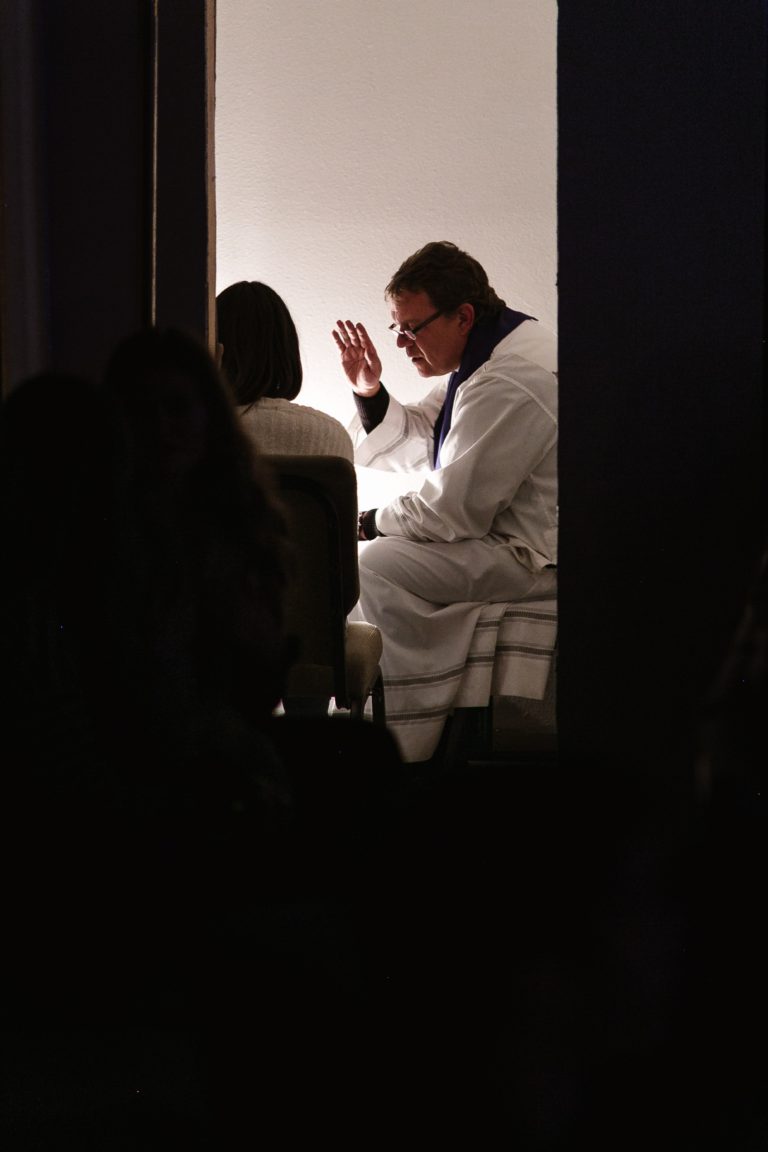Are Catholics Idol Worshippers?
The accusation of “Catholic idol worship” has persisted for centuries despite the Church’s clear and consistent teaching against idolatry. As a Catholic who regularly discusses faith matters with non-Catholic friends, I frequently encounter this misunderstanding about the statues in our churches. The confusion is understandable when viewed from outside our tradition, but requires proper clarification.
Let us first consider what the Catholic Church actually teaches: Catholics do not worship statues or images. The Catechism of the Catholic Church explicitly condemns idolatry as a grave sin. What many mistake for “idol worship” is actually veneration – a fundamentally different practice that shows respect, not worship, to what the image represents.

This distinction between veneration and worship forms the cornerstone of understanding Catholic practice regarding sacred imagery. Veneration passes through the image to the person represented, while worship (latria) is reserved for God alone.
Furthermore, throughout the Scriptures, we find God Himself commanding the creation of religious images. Consider these biblical examples:
The cherubim on the Ark of the Covenant (Exodus 25:18-20)
The bronze serpent Moses crafted for healing (Numbers 21:8-9)
The extensive imagery adorning Solomon’s Temple
These divinely ordained examples demonstrate that God’s prohibition against graven images specifically targets idolatry – worshiping created things – rather than all religious artwork.
Should you be looking for an explicit condemnation of Catholic statues in Scripture, you will be searching in vain. What Scripture condemns is the worship of images as gods themselves, which the Catholic Church likewise condemns.
Throughout this article, we will explore several important questions:
What does the Bible actually teach about religious imagery?
How do Catholics distinguish between idols and sacred statues?
Why do Catholics pray near statues?
What purpose do statues serve in Catholic worship?
By examining both Scripture and the Church’s consistent teaching, I hope to illuminate this often misunderstood aspect of Catholic faith. The truth about Catholic statues is much more profound than critics suggest – they serve as visual reminders pointing beyond themselves to greater spiritual realities.
Do Catholics Truly Worship Idols?
The accusation that Catholics bow to statues and worship them as gods remains one of the most persistent misunderstandings about the Catholic faith. This claim strikes at the heart of our devotional practices yet fundamentally misrepresents what actually takes place in Catholic churches throughout the world.
What is the Nature of the Accusation?
The allegation appears straightforward: critics observe Catholics kneeling before statues, lighting candles, and praying in their presence, then conclude we are worshiping these objects—or the saints they represent—as deities. This seems to contradict the commandment from Exodus 20:4-5: “You shall not make for yourself a graven image… you shall not bow down to them or serve them.”
Many who make this accusation genuinely believe Catholics transfer worship due to God alone to created objects. I have encountered numerous well-meaning Christians who express concern that Catholic practices violate biblical teaching. Some even suggest the Church deliberately “hides” the second commandment to justify statue use.
However, these accusations fundamentally misinterpret Catholic doctrine. The Catholic Church explicitly condemns idolatry in its official teachings. As we read in the Catechism, idolatry is defined as “a perversion of man’s innate religious sense” that transfers “the indestructible notion of God to anything other than God.”
Why This Misunderstanding Persists?
Despite clear Catholic teaching against idol worship, this accusation continues for several important reasons:
First, theological differences exist in how various Christian traditions interpret biblical passages about images. While some Christians understand Exodus 20:4-5 as an absolute prohibition against any religious imagery, Catholics interpret these commands within their full biblical context, noting that God later commanded the creation of sacred images like the cherubim on the Ark (Exodus 25).
Second, the historical context of the Reformation plays a significant role. During this period, many Protestant movements emphasized the danger of idolatry and rejected religious imagery entirely. This theological position became embedded in Protestant identity and continues to influence how some Christians view Catholic practices.
Third, terminology creates substantial confusion. The word “worship” in earlier centuries had broader meanings that included various forms of honor. Today, Catholics use more precise terms:
Latria – worship given to God alone
Dulia – honor given to saints
Hyperdulia – special honor given to Mary
To understand this distinction is crucial: Catholics do not believe statues are gods or contain divine power. They are, much like family photographs, visual reminders of those we love and respect.
Fourth, outward appearances can be misleading. When non-Catholics observe Catholics kneeling before statues, they might assume worship is occurring, but external postures don’t reveal internal intentions. This question was posited centuries ago, and the Church Fathers clearly distinguished between actions that might appear similar but have profoundly different spiritual meanings.
As St. Augustine collects in his writings, true idolatry involves sins like “presumption, despair, striving against known truth, envy of fraternal charity, impenitence, obstinacy.” None of these apply to the Catholic practice of using statues as aids to devotion.
Much is unknown to those outside the faith about what Catholics are actually doing when they pray near statues. A Catholic lighting a candle before a statue of Mary is engaged in an entirely different spiritual activity than someone making offerings to appease a deity believed to reside within an idol.
I highly recommend those with questions about Catholic practices to examine the Church’s actual teachings rather than relying on secondhand interpretations. Throughout the Scriptures, the notion of proper reverence toward holy things is implied, while idolatry—the worship of created things as gods—is consistently condemned.
What the Bible Really Says About Sacred Images
Many who criticize Catholic practices regarding statues focus exclusively on the commandment against graven images while overlooking numerous passages where God Himself commands the creation of religious artwork. What does Scripture actually teach about this topic? Let us examine the biblical evidence.
God’s Command to Create the Cherubim
The most compelling evidence supporting sacred imagery appears just five chapters after the Ten Commandments themselves. In Exodus 25:18-20, God explicitly instructs Moses:
“And you shall make two cherubim of gold; of hammered work shall you make them, on the two ends of the mercy seat.”
These weren’t mere decorative elements but substantial gold sculptures of angelic beings. More importantly, these cherubim served a sacred purpose in worship. As we read in the Scriptures, God continues in Exodus 25:22:
“There I will meet with you, and from above the mercy seat, between the two cherubim that are on the ark of the Testimony, I will speak with you about all that I command you regarding the Israelites.”
The cherubim were crafted as “one piece with the mercy seat,” meaning they were integrated into the very cover of the Ark containing the Ten Commandments. This reveals a crucial distinction: God prohibits images made for worship as gods, yet commands images used to facilitate worship of Him.
The Bronze Serpent as Healing Instrument
A second powerful example appears in Numbers 21:8-9. When poisonous serpents plagued the Israelites as punishment for their rebellion, God instructed Moses:
“Make a fiery serpent and set it on a pole, and everyone who is bitten, when he sees it, shall live.”
This divinely mandated image served as a channel for God’s healing power. The people weren’t healed by the bronze itself—the serpent was simply an instrument through which God worked. This required an act of faith in God’s plan for healing to occur.
What is particularly significant is that this bronze serpent prefigured Christ’s sacrifice. Jesus Himself draws this parallel in John 3:14-15:
“Just as Moses lifted up the snake in the wilderness, so the Son of Man must be lifted up, so that everyone who believes in him may have eternal life.”
Regrettably, the Israelites eventually began worshiping this object centuries later, burning incense to it until King Hezekiah destroyed it (2 Kings 18:4). This illustrates the crucial distinction between using images as aids to worship God versus worshiping the images themselves.
The Temple’s Sacred Imagery
Solomon’s temple, built according to divine specifications, contained numerous religious images throughout its structure. As we read in 1 Kings 6:29:
“Throughout the temple, on the walls all around, both in the inner and outer rooms, he carved cherubim, palm trees and open flowers.”
Furthermore, Solomon’s temple featured two massive cherubim statues in the Holy of Holies. The temple walls, doors, and veil also displayed images of cherubim (1 Kings 6:29-35).
Additionally, Ezekiel’s vision of the temple likewise includes sacred imagery:
“It was carved of cherubim and palm trees, a palm tree between cherub and cherub” (Ezekiel 41:17-18).
What These Biblical Examples Teach Us
What does this biblical evidence demonstrate? Three important truths emerge:
God’s prohibition against images was specifically against idolatry—worshiping created things—rather than against all religious artwork.
God Himself commanded the creation of sacred images when they served to direct worship to Him rather than becoming objects of worship themselves.
The danger arises not from the existence of sacred images but from misdirected worship toward them.
Through these biblical precedents, we can understand why Catholic practice aligns with Scripture. Catholics don’t worship statues any more than ancient Israelites worshiped the cherubim on the Ark. Instead, like those biblical images, Catholic statues serve as visual reminders pointing beyond themselves to greater spiritual realities.
The consistent message throughout Scripture is not a blanket condemnation of all religious imagery, but rather a warning against worshiping created things instead of the Creator. This distinction is crucial for understanding both biblical teaching and Catholic
What the Catholic Church Teaches About Sacred Images?
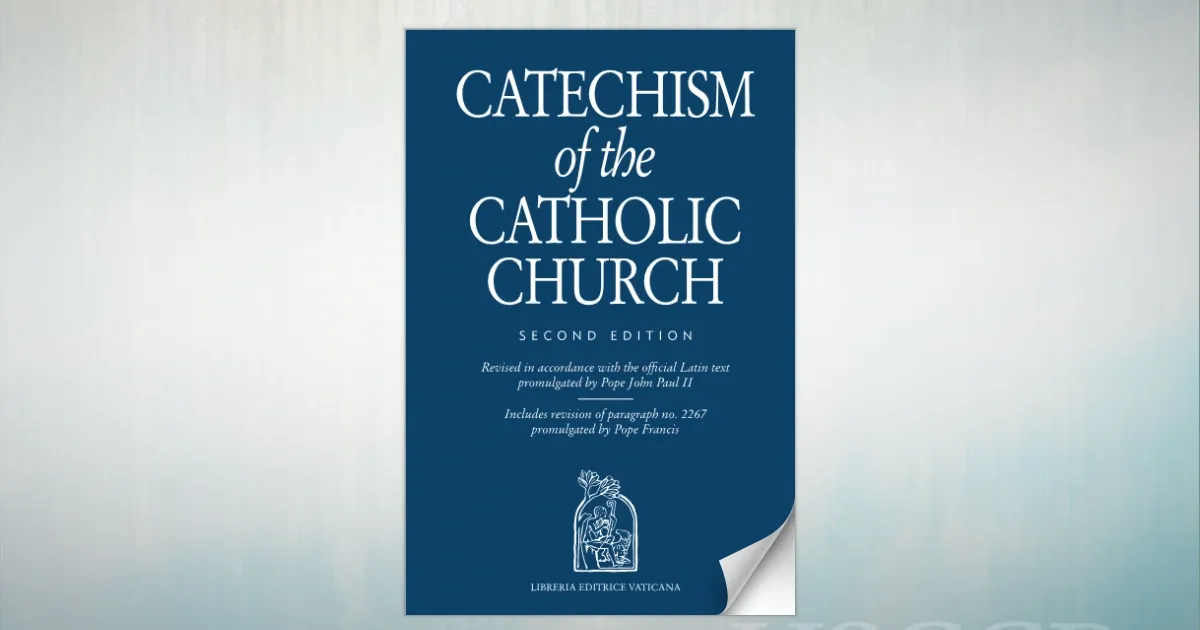
The Catholic Church’s teaching on sacred images and idolatry has remained consistent throughout its history. This is a Doctrine of the faith that has been developed and clarified over centuries, much like other central Catholic teachings.
The Catechism on Idolatry and Veneration
The Catechism of the Catholic Church speaks with absolute clarity on this matter. It states unequivocally:
“Idolatry not only refers to false pagan worship. It remains a constant temptation to faith. Idolatry consists in divinizing what is not God” (CCC 2113).
Furthermore, the Catechism provides this essential distinction:
“An idolater is someone who transfers his indestructible notion of God to anything other than God” (CCC 2114).
This shows the extent to which the Church has reflected on the dangers of misdirected worship.
Regarding proper veneration, the Church teaches:
“The honor rendered to an image passes to its prototype, and whoever venerates an image venerates the person portrayed in it” (CCC 2132).
This principle, drawn from the Second Council of Nicaea, establishes the theological foundation for Catholic practice.
Historical Testimony Against Idol Worship
Throughout the Scriptures and Church history, the notion of proper veneration versus idolatry is consistently maintained. The Council of Trent (16th Century) addressed this directly, declaring that Catholics understand “that in images there is no divinity or virtue on account of which they are to be worshiped, that no petitions can be addressed to them, and that no trust is to be placed in them.”
The early Church Fathers from the second century onwards developed this understanding as part of the deposit of faith. Evidence from the Roman catacombs reveals that even as the earliest Christians rejected pagan idolatry, they embraced sacred art as aids to devotion.
This historical consistency demonstrates how the Church has always maintained the distinction between idolatrous worship and legitimate veneration of sacred images.
Biblical Examples and Proper Use
To understand how this would take place in practice, let us consider biblical examples that illustrate proper and improper use of religious images:
The Bronze Serpent – Initially commanded by God and used properly as an instrument of healing (Numbers 21:8-9), it later became an object of improper worship and was destroyed by King Hezekiah (2 Kings 18:4).
The Ark of the Covenant – The cherubim adorning it were never worshiped, yet they facilitated worship of the true God.
Solomon’s Temple – Filled with religious imagery that aided worship without becoming objects of worship themselves.
Catholic churches today contain statues and images that serve as:
Visual teaching tools (especially important historically when literacy rates were low)
Aids to focus prayer and meditation
Reminders of the communion of saints
Expressions of the fundamental truth of the Incarnation – that God became visible in human form
The honor shown to these images passes through them to the persons they represent. This practice remains faithful to biblical teaching while enriching worship through visual reminders of sacred truths.
What is essential to note is that Catholics direct their prayers through—not to—these sacred reminders. The distinction between veneration and worship stands at the heart of Catholic practice, preserving both the beauty of sacred art and the purity of worship due to God alone.
As we’ve explored the use of statues in Catholic tradition, several important distinctions have become clear. Catholics do not worship statues – this is a fundamental truth that must be understood when discussing this aspect of our faith. Throughout the Scriptures the notion of proper religious imagery is implied and even commanded by God Himself.
Let us consider what we have learned:
The Bible contains numerous instances where God commanded the creation of religious artwork – from the cherubim on the Ark of the Covenant to the bronze serpent of Moses.
The Catholic Church has consistently condemned idolatry throughout its history. This is a Doctrine of the faith – that worship is reserved for God alone.
Veneration (dulia) directed toward saints and hyperdulia given to Mary differs fundamentally from the worship (latria) reserved for God alone.
The Catechism explicitly states: “The honor rendered to an image passes to its prototype, and whoever venerates an image venerates the person portrayed in it.”
When Catholics kneel before a statue, they aren’t worshiping the plaster or marble itself. Rather, they’re honoring the person represented, much as someone might respectfully handle a photograph of a loved one. This distinction, though subtle to outside observers, reflects a theological principle that has guided Catholic practice since the early Church.
Critics who point to biblical prohibitions against graven images often overlook the context of these passages. God forbids the worship of images as gods themselves, not their use as devotional aids that direct our thoughts toward heavenly realities.
I highly recommend studying the Council of Trent’s declarations on sacred images for those seeking deeper understanding. These teachings clarify that “in images there is no divinity or virtue on account of which they are to be worshiped, that no petitions can be addressed to them, and that no trust is to be placed in them.”
The presence of statues in our churches serves a holy purpose – they remind us of Christ’s sacrifice, the virtues of the saints, and the reality of our communion with those who have gone before us. They are windows to heaven, not objects of worship themselves.
A great read on this topic would be the Second Council of Nicaea’s teachings on religious imagery, which illumines the mind and gives great insight into the Church’s consistent teaching against idolatry while affirming the proper use of sacred art.
To understand this would take place is to draw upon both Scripture and Tradition, along with the consistent teaching of the Church Fathers, to provide a complete picture of how Catholics properly honor – but never worship – the statues in our churches.
Praise God for the gift of sacred art that helps direct our hearts and minds to Him.
FAQs
Q1. Do Catholics worship statues? No, Catholics do not worship statues. Statues are used as visual aids for prayer and devotion, serving as reminders of Christ and the saints. Catholics direct their worship to God alone, not to any created objects.
Q2. What is the purpose of statues in Catholic churches? Statues in Catholic churches serve as visual reminders of faith, helping to focus thoughts on spiritual matters. They act as teaching tools, especially historically when literacy rates were low, and create an atmosphere of reverence in worship spaces.
Q3. How do Catholics justify the use of statues given biblical prohibitions against graven images? Catholics interpret biblical prohibitions against graven images as warnings against idolatry, not a blanket ban on religious artwork. They point to instances in the Old Testament where God commanded the creation of religious images, such as the cherubim on the Ark of the Covenant.
Q4. What’s the difference between veneration and worship in Catholic practice? Veneration is showing respect or honor to saints and holy figures, while worship (latria) is reserved for God alone. Catholics may kneel before a statue to show reverence, but their prayers and worship are directed to God, not the physical object.
Q5. Why do some people think Catholics pray to statues? This misconception arises from observing Catholics praying near statues. However, Catholics pray in the presence of statues as visual focal points, not to the statues themselves. The statues serve as reminders of the saints or Christ, to whom they direct their prayers for intercession or directly to God.
